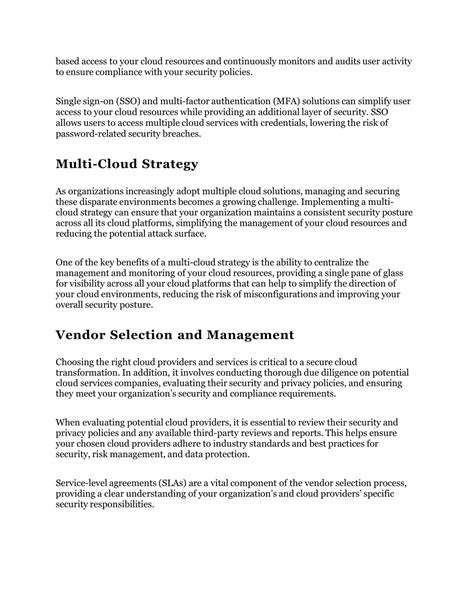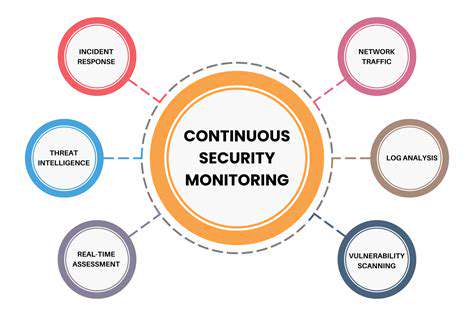Understanding Ransomware and Malware [Prevention Guide]
Viruses are perhaps the most well-known type of malware, often replicating themselves and spreading to other files and systems. They can cause significant damage by corrupting or deleting data, slowing down computer performance, and even disabling essential system functions. Understanding the characteristics of a virus, such as its ability to attach itself to legitimate programs and its capacity for self-replication, is crucial for identifying and mitigating its impact. Viruses can often be spread through email attachments, infected websites, or compromised software downloads, highlighting the importance of vigilance in these areas. Effective antivirus software plays a vital role in detecting and removing these malicious programs. Comprehensive security measures encompassing software updates and user awareness training significantly reduce the risk of infection.
The insidious nature of viruses lies in their ability to hide within seemingly innocuous files. A user might not immediately recognize the presence of a virus, potentially leading to extensive data loss or system compromise. This underscores the importance of regular system scans and proactive security measures. The ability of viruses to exploit vulnerabilities in operating systems and applications further emphasizes the need for consistent software updates and security patches. Recognizing the various ways viruses spread and their potential consequences is critical for implementing effective preventative strategies.
Identifying Common Malware Types: Worms
Worms, unlike viruses, don't require a host program to replicate. Instead, they autonomously spread through networks, often exploiting vulnerabilities in system security to gain access and propagate to other machines. This self-replicating nature makes worms particularly dangerous, as they can quickly consume network bandwidth and compromise multiple systems simultaneously. Understanding the methods worms use to propagate, such as exploiting network protocols or email systems, is crucial for developing effective defense strategies. The rapid spread of worms often overwhelms network resources, leading to significant disruptions and data breaches.
A critical aspect of worm prevention involves timely patching of security vulnerabilities. This proactive approach minimizes the potential entry points for worms to exploit. Regular network monitoring and intrusion detection systems can also play a crucial role in identifying and containing worm outbreaks early on. The potential for widespread damage necessitates a multi-layered approach encompassing both software and network security measures. A comprehensive security strategy that combines technical solutions with user education and awareness is essential in mitigating the risk associated with worm infections.
Identifying Common Malware Types: Trojans
Trojan horses, often disguised as legitimate software, gain access to systems by misleading users. They can steal sensitive information, install additional malware, or grant unauthorized access to attackers. The deceptive nature of Trojans makes them particularly insidious, as users may unknowingly invite these malicious programs onto their systems. Understanding the methods Trojans use to disguise themselves, such as masquerading as legitimate software updates or attachments, is key to avoiding infection. The consequences of a Trojan infection can range from data breaches to complete system compromise.
Identifying Common Malware Types: Spyware
Spyware, as the name suggests, is designed to monitor user activity without their knowledge or consent. This malicious software can collect personal information, track browsing habits, and steal passwords. The stealthy nature of spyware makes it difficult to detect, potentially leading to significant privacy violations. Regular security scans and the use of anti-spyware tools are essential for identifying and removing spyware from systems. Protecting sensitive data and maintaining privacy are crucial aspects of mitigating the risks associated with spyware infections. Awareness of the various ways spyware collects data and the potential consequences of infection is essential for developing effective preventative measures.
Implementing a Multi-Layered Security Strategy

Network Security Fundamentals
Implementing a robust network security architecture requires a deep understanding of fundamental security principles. This involves recognizing and mitigating potential threats across various layers of the network infrastructure. Understanding the vulnerabilities in each layer is crucial for effective security implementation. This includes protocols, devices, and applications, as well as the users who interact with the network.
A strong security foundation is built on a thorough risk assessment. Identifying potential risks and prioritizing them based on likelihood and impact allows for focused security measures. This proactive approach ensures that resources are allocated effectively to address the most significant threats.
Layered Security Architecture Design
A multi-layered security approach is essential for comprehensive protection. This involves implementing security controls at multiple points within the network, from the physical access layer to the application layer. This layered approach creates multiple lines of defense, making it harder for attackers to penetrate the network.
Each layer should have specific security controls tailored to the potential threats and vulnerabilities associated with that layer. For example, firewalls protect the network perimeter, while intrusion detection systems monitor network traffic for malicious activity. This layered approach ensures that a breach at one point doesn't compromise the entire system.
Security Control Implementation
Implementing security controls requires careful planning and execution. This includes choosing appropriate technologies, configuring them correctly, and regularly monitoring their effectiveness. Thorough documentation of the security controls and procedures is critical for efficient troubleshooting and maintenance.
Regular security audits and penetration testing are vital for identifying vulnerabilities and weaknesses in the implemented security measures. These assessments allow for proactive identification and resolution of issues before they are exploited. This proactive approach is key to maintaining a robust security posture.
Security Awareness Training and User Education
Security awareness training is a critical component of a comprehensive security strategy. Educating users about potential threats, phishing scams, and safe computing practices is essential for reducing the risk of human error. Employee training should be ongoing and adaptable to new threats and attack vectors.
Empowering users with the knowledge and skills to recognize and avoid security risks is crucial to overall network security. By fostering a culture of security awareness, organizations can significantly reduce the likelihood of successful attacks. Regular updates to training materials are key to keeping employees informed of the latest threat landscape.

Read more about Understanding Ransomware and Malware [Prevention Guide]
Hot Recommendations
- Review: The New [Specific Brand] Smart Lock Is It Secure?
- Best Budget Studio Monitors for Music Production
- Top Flight Simulation Peripherals (Joysticks, Throttles, etc.)
- Top Portable Scanners for Document Management On the Go
- Reviewing the Latest Smart Air Purifiers for Your Home
- Best Portable Photo Printers for Travelers and Memory Keepers
- The Future of Personal Transportation Beyond Cars (Hyperloop, eVTOL)
- Top Network Monitoring Tools [Free & Paid Options]
- Understanding the Tech Behind mRNA Vaccines [A Look Inside]
- Guide to Choosing the Right Gaming Chair for Ergonomics





![Guide to Understanding Ransomware Negotiation [Industry View]](/static/images/25/2025-07/Post-NegotiationSteps3AEnsuringLong-TermSecurity.jpg)
![Understanding the Tech Behind mRNA Vaccines [A Look Inside]](/static/images/25/2025-07/SafetyandEfficacyofmRNAVaccines3AADeeperLook.jpg)




![Ultimate Guide to Using [Software] Keyboard Shortcuts](/static/images/25/2025-08/AdvancedEditingShortcuts.jpg)